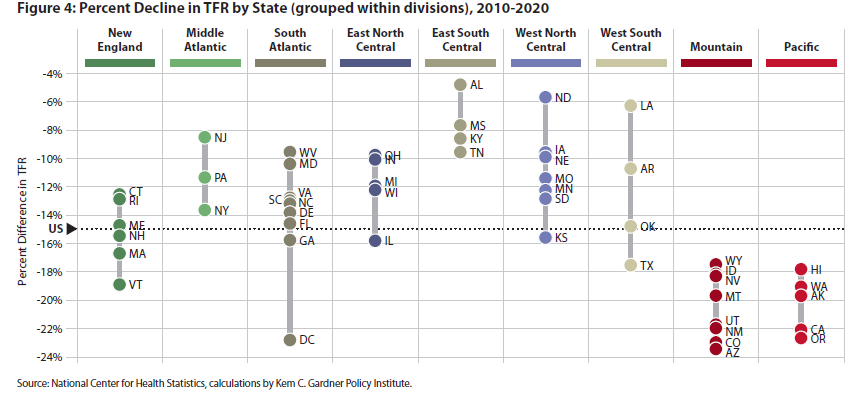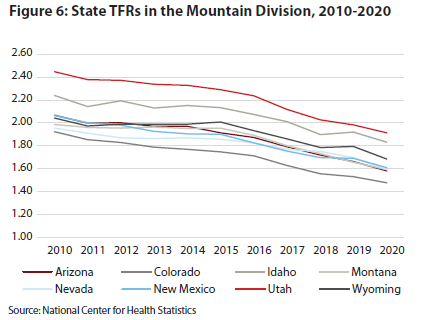Blog Post
Insight: Utah’s Declining Fertility is Both the Exception and the Rule
By: Emily Harris, Senior Demographer
Utah is known for many things: soda shops that put creamer and coconut in their sodas, world-class skiing, a strong and stable economy, and high fertility rates. But over the last few years, Utah has dropped its title of the highest fertility rate in the nation, going from highest in 2015 to 4th highest in 2020. This trend has sparked conversations in Utah among residents, lawmakers, economists, and community leaders about why fertility is declining rapidly and whether it is a problem.
This latest report doesn’t attempt to answer any of those kinds of fertility questions. Still, it does seek to understand whether or not Utah’s declining fertility rate is an exception or the rule over the last decade.
And the truth is—it’s a little of both.

All states in the U.S. experienced fertility rate declines from 2010-2020, but the reductions ranged from a mere 5% to almost 24%. Utah’s fertility rate declined by nearly 22% from 2010-2020 but still maintained a high fertility rate compared to other states ― 4th highest in the nation and highest compared to the other Intermountain West and Pacific states.
What we do notice is that the Intermountain West and Pacific divisions (and the states within them) are experiencing the largest fertility rate declines in the country. So, while Utah’s fertility decline is exceptional in the national context, it is also part of the rule when examining the Western divisions and states.

This newest fertility report compiles and analyzes total fertility and age-specific fertility rates for all 50 states and Washington D.C. for 2010-2020. By doing this, we provide a decade-long overview of the geographic differences in fertility rate declines, the extent of those declines, and how those declines vary by age (because that’s essential fertility information too).
Now that we have taken a closer look at Utah’s fertility over the last decade, we can start thinking more about Utah’s fertility future. Preliminary national birth data for 2021 reveal that the U.S. total fertility rate increased for the first time since 2014, and age-specific rates from 25-44 also increased. This national information implies that some states will also see a 2021 rebound in fertility, but we won’t know which ones until the end of 2022 or the beginning of 2023, so stay tuned!
Emily Harris is a senior demographer at the Kem C. Gardner Policy Institute.

